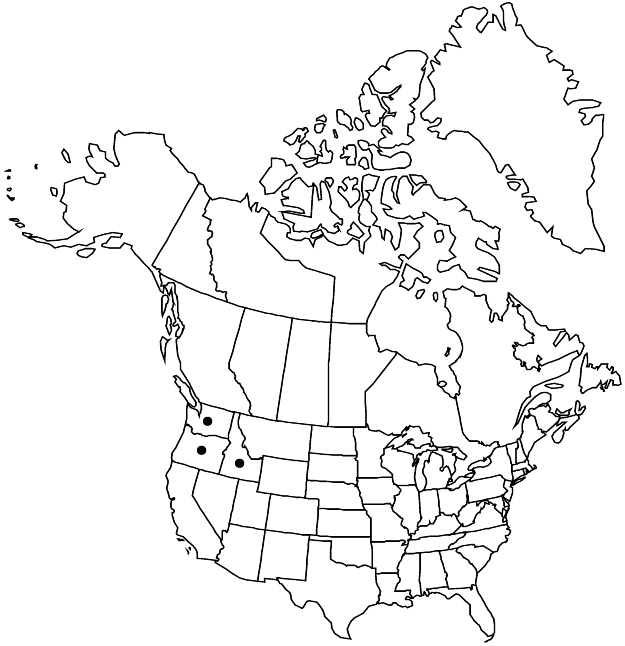Micranthes fragosa
in N. L. Britton et al., N. Amer. Fl. 22: 137. 1905,.
Plants often mat-forming, long, thin-rhizomatous. Leaves basal; petiole flattened, 4–10 cm; blade broadly ovate to deltate, 4–8(–10) cm, fleshy, base attenuate, margins entire or minutely denticulate, ciliate, surfaces glabrate to sparsely hairy. Inflorescences 30+-flowered, (flowers sometimes almost secund), open, lax, conic thyrses with ± open cymules on lateral branches, 20–50 cm, purple-tipped stipitate-glandular. Flowers: sepals spreading to slightly reflexed, ovate to deltate; petals white, not spotted, obovate, clawed, 2–3 mm, longer than sepals; filaments linear, flattened; pistils connate to 1/2 their lengths; ovary 1/2+ inferior, appearing more superior in fruit. Capsules green or reddish purple, folliclelike. 2n = 20, 38.
Phenology: Flowering spring–summer.
Habitat: Wet, mossy cliffs, unstable slopes, often near watercourses
Elevation: 100-2600 m
Distribution

Idaho, Oreg., Wash.
Discussion
Micranthes fragosa is restored to specific status here because a review of its differences with M. nidifica shows it to be more distinctive than previously thought, and for consistency in the application of criteria for species recognition within the rest of the genus. In the southernmost part of its range, M. fragosa converges in appearance with M. californica.
Selected References
None.